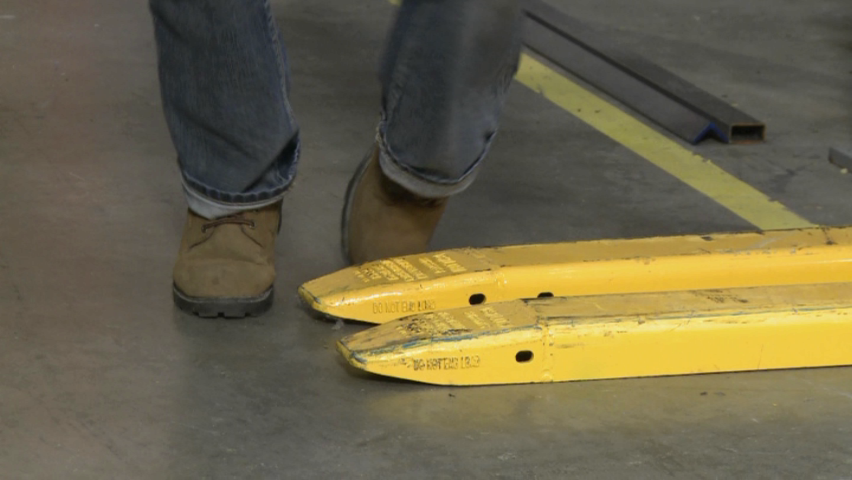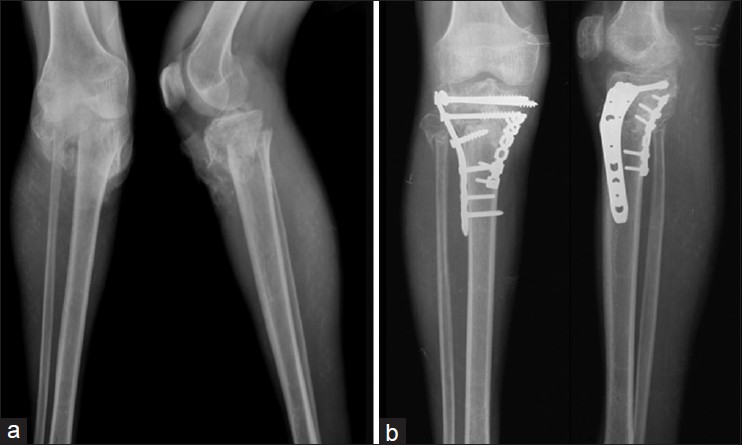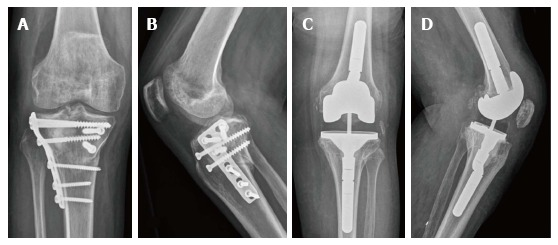CASE VIGNETTE – AUGUST 2018
A Simple Stumble – A Lifetime Of Misery
I recently saw a 45 year old male who sustained a knee injury whilst leaving work one afternoon. The injury occurred in winter of 2015. It was only 5:45pm but it was already dark. He was leaving a donga on a work site in central Queensland. There was only one step from the donga down to the uneven ground below but somehow, he tripped and fell. He did not actually roll onto the ground but instead, took all of his weight on his right foot with his knee joint partially bent and his torso twisting to one side. He experienced immediate pain.

He was helped by friends, taken to a local hospital, spent the night in bed with analgesics and elevation, and was then referred to a regional centre for further assessment. He had sustained fractures involving the upper end of his shin bone (the tibia) and both sides of the tibia that contributed to the knee joint (the tibial plateaux). The fractures were displaced and the joint surface was no longer pristine and smooth. The treating surgeons opened the fractures, reduced the fragments as best they could and used metal plates and screws with some biosynthetic bone graft in an effort to reconstruct the upper end of the shin bone.
As valiant as the efforts were, a so-called anatomical reconstruction could not be achieved. Over the next 20 months he was subjected to braces, physiotherapy, crutch ambulation, analgesic ingestion and several programmes of rehabilitation.

As nature would have it, the fractures did heal but the joint surface was no longer smooth or congruous. In addition, the soft tissues had been damaged quite severely and whilst the ligaments remained intact, the surrounding capsule became adherent to the lower thigh bone and upper shin bone. The knee joint became stiff, painful and swollen.
Now it’s early days but clinical and radiographic examinations confirm that this knee joint is not retrievable. He is likely to require a total knee replacement within the next couple of years. That puts him in his late forties, and this is very early for this type of operative intervention.
When total knee replacements are performed in patients in their sixties, the arthroplasty or artificial joint has a survivorship of approximately 90% at 20 years. That is to say, only 0.5% of these joints fail annually. Failure is defined as the joint requiring revision or a second replacement.
The results of knee replacements in younger men are not quite as good. His failure rate could actually be twice that. By the time he is 70 therefore, he has a 40% chance of that joint requiring revision. The primary replacement would have cost in the order of $50,000. The revision will involve costs in the order of $60,000.
Apart from the knee, this poor fellow was otherwise in excellent health. There is no reason to believe that he may not live until his mid-eighties or even longer. In fact, his father lived to 101 and his mother, whilst dying in her early seventies, was fatally injured in a road traffic accident. In other respects, it is probable that she would also have lived until her late nineties or even beyond. This chap’s genetics therefore are such that he could also live at least that long.
That therefore raises the spectre of him requiring a re-revision. Costs in the order of $70,000 may be involved. He may have a 15%-20% chance of requiring this re-revision.

Added to the complexities of these surgeries is the risk of complications. Arteries or nerves may be damaged, he may suffer with deep venous thromboses or emboli travelling to the lungs, he may suffer a stroke or even a debilitating cardiac event. The infection rate for the primary arthroplasty is only about 0.6% but with the revision and the re-revision, the infection rate may double, treble or even quadruple.
This simple fall therefore has the ability to open up a very unpleasant further 40, 50 or even 60 years. Unless your reporting expert is aware of these scenarios, your client is at risk of being severely under-done at the time of settlement. Choose your expert wisely.
